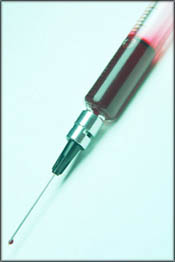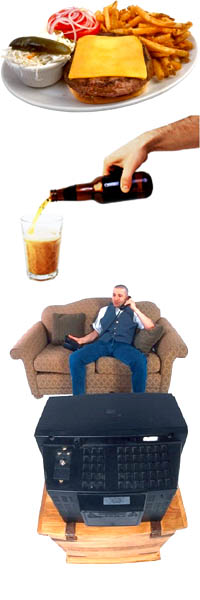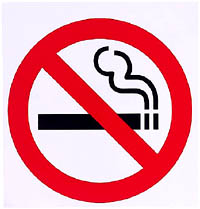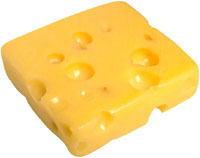Identifying High Cholesterol Symptoms: Recognizing the Problem Having High LDL
Knowing how to identify high cholesterol symptoms can literally save your life or the life or someone you love.
Unfortunately all too often, high cholesterol isn’t identified and diagnosed early enough, meaning the battle to overcome it and get back to healthy levels is that much harder. Fortunately it is possible but it is harder.
So the earlier you sense symptoms of high cholesterol and do something about, the better!
Symptoms of High Cholesterol Are Diseases Caused by High Cholesterol Levels
A Blood Test Is the Only Way to Really Identify High Cholesterol Levels
 What are some of the tell-tale signs of elevated cholesterol and the most obvious high cholesterol symptoms?
What are some of the tell-tale signs of elevated cholesterol and the most obvious high cholesterol symptoms?
Well, just having high cholesterol won’t necessarily cause any immediate and noticeable high cholesterol symptoms.
Remember, high cholesterol in itself can only really be identified through blood tests. The high cholesterol symptoms you will see are symptoms of diseases caused by high cholesterol, and there are various diseases that fall into this category.
In other words, high cholesterol symptoms can vary quite a lot depending on the cholesterol-related disease you develop.
Unfortunately, there’s not really a way to recognize high cholesterol symptoms from the outside until a cholesterol-related disease has already developed. If you’re experiencing one or more of the high cholesterol symptoms, it’s best you ask your doctor to run the proper tests on you to confirm your condition.
Examining Your Diet to Make a Preliminary Assessment of Your Cholesterol Levels
While the lack of external signs make catching high cholesterol early before it leads to disease development a difficult task, examining your diet can give you a pretty good idea of whether you might have high cholesterol levels.
Chances are if you eat a diet high in sugar and saturated fat and you’ve been on that diet for more than a year or so continuously, you may well have higher than normal cholesterol levels.
A Poor Diet Combined with No Exercise and High Alcohol Intake Is a Very Bad Combo for Cholesterol
 Another thing you should take into account is your usual activity level. If you eat a poor diet but you also work out five times a week, you might be fine in the cholesterol stakes.
Another thing you should take into account is your usual activity level. If you eat a poor diet but you also work out five times a week, you might be fine in the cholesterol stakes.
But a poor diet combined with low exercise levels and regular use of alcohol and nicotine is a recipe for disastrously high cholesterol.
In short, without an actual medical test to determine your cholesterol levels, your lifestyle and habits may be a better indication of where your cholesterol level is currently at than any physical symptoms.
Explaining the Best Way to Assess High Cholesterol
High Cholesterol Symptoms: Lipoprotein Profile Test
This is the technical name for the test doctors use to check your cholesterol levels. In particular it helps doctors get a good idea of how at risk you are of coronary heart disease.
The test is actually a series of tests done together in which blood samples are taken and examined. It lets doctors know your total cholesterol level as well as a breakdown of your levels of HDL and LDL cholesterol.
Once you’ve had this profile test done your doctor will be able to give you a fairly accurate idea of what your risk levels are for certain heart-related health problems are and will then be able to decide what action you need to take.
If it turns out you do have high cholesterol, it’s likely your doctor will at the very least recommend a diet and exercise plan and may also prescribe medication such as niacin for cholesterol.
High Cholesterol Symptoms: Explaining the Lipoprotein Test
When you go in for a lipoprotein profile test, it can be helpful to know beforehand what actually counts as a high cholesterol level and what’s normal.
With this knowledge the numbers will actually make some sense to you right away when your doctor gives you your results, so here’s how it breaks down.
First of all, cholesterol is measured in milligrams per deciliter, which you’ll see written as mg/dL.
When it comes to total cholesterol count, you want to stay under 200 mg/dL.
When you start moving above 200 mg/Dl, there’s cause for concern, and when your level gets over 240 mg/dL you’re considered to be high risk.
The Amount of Good Cholesterol vs. Bad Cholesterol Is also an Important Part of Your Risk Profile
Generally speaking you want to aim for having less than 100 mg/dL of bad cholesterol – LDL.
You also want to have above 50 mg/dL of good cholesterol – HDL.
If you can manage to get your good cholesterol up over 60 mg/dL, this should actually start to help protect you against heart disease.
The worst scenario is having a total cholesterol count above 240 mg/dL and having a bad cholesterol count above 200 mg/dL. This is a very high risk scenario.
Even in this type of case, though, there is action you can take to get your cholesterol back down to safe levels, or at the very least reduce your risk level.
The rest of this article will deal with action steps you can take to lower your LDL cholesterol and improve your good cholesterol levels, as well as the medications that doctors often prescribe to control cholesterol in severe cases.
How to Lower LDL Cholesterol
Once you’ve had a cholesterol test and confirmed that you do actually have high cholesterol and may be at risk of heart disease and other health problems, you now have to formulate a plan for dealing with it.
Your doctor may have prescribed you some medication and a diet plan at this stage – remember, anything your doctor tells you to do overrides any advice you read online, but it’s likely the plan given to you will look similar to what’s described here.
Diet and lifestyle changes are fairly standard issue when it comes to how to lower LDL cholesterol.
Now, let’s get into the science of lowering LDL cholesterol (that’s the bad cholesterol).
High Cholesterol Symptoms: Controlling High Cholesterol and Lowering LDL Levels
There are two main plans of attack when it comes to controlling high cholesterol:
1) The first is proper diet!
2) The second is proper medication!
The First Plan: Getting the Diet Right and Using Your Body More
Let’s look at diet first before explaining some of the medications commonly used by doctors for cholesterol control.
If your high cholesterol problem is not yet severe, you can probably get it under control completely and eventually get back to safe levels with diet alone. The diet plan required to control cholesterol consists of foods that raise HDL (otherwise known as good cholesterol) and lower LDL (bad cholesterol.
 Examples of foods that help raise good cholesterol levels include cranberry juice and foods with a lot of soluble fiber – in general that means fruit and veges. You want to start slanting your diet heavily towards big helping of fruit and veg, along with low-fat sources of protein like skinless chicken breast and sources of ‘good fats’ like fish oil.
Examples of foods that help raise good cholesterol levels include cranberry juice and foods with a lot of soluble fiber – in general that means fruit and veges. You want to start slanting your diet heavily towards big helping of fruit and veg, along with low-fat sources of protein like skinless chicken breast and sources of ‘good fats’ like fish oil.
 Exercising regularly and cutting out toxic habits like smoking and excessive alcohol drinking can also be great for controlling high cholesterol. If you’re not exercising at least three times a week, this is one of the best habit changes you can make, even if you only start off with walking.
Exercising regularly and cutting out toxic habits like smoking and excessive alcohol drinking can also be great for controlling high cholesterol. If you’re not exercising at least three times a week, this is one of the best habit changes you can make, even if you only start off with walking.
Don’t push yourself too hard – at the beginning of an exercise program, getting into a regular routine is more important than the intensity you put into your workouts. If you’re struggling to get started, just go for a walk three times a week for three weeks.
Once the habit starts to form and you start to develop some fitness you can increase to a more intense form of exercise. The important thing is that you start.
 Foods that lower bad cholesterol directly include oatmeal, walnuts and fish (the type of fish you eat is also important – salmon, mackerel, trout and herring are all good choices).
Foods that lower bad cholesterol directly include oatmeal, walnuts and fish (the type of fish you eat is also important – salmon, mackerel, trout and herring are all good choices).
 Foods to avoid – those that are known to raise bad cholesterol – include eggs, cheese, high sugar foods and high saturated fat foods. These foods can be eaten but only in small portions and only occasionally.
Foods to avoid – those that are known to raise bad cholesterol – include eggs, cheese, high sugar foods and high saturated fat foods. These foods can be eaten but only in small portions and only occasionally.
Otherwise you should try to substitute in healthy alternatives – skinless chicken in place of a steak, for example.
When it comes to using cooking oils, aim to use a healthy oil such as olive oil – but in general, you want to avoid frying foods as much as possible and opt for healthier cooking options like steaming and boiling.
The Second Plan: Consult Your Doctor about High Cholesterol Medication
In cases where cholesterol is already at dangerously high levels, doctors will usually prescribe medication to try to push levels down along with recommending a healthy diet which will include plenty of the foods described above.
The general name for most high cholesterol medication is ‘statins.’
The most often prescribed statin is Lipitor, made by big drug manufacturer Pfizer. Other statins include Livalo, Lipostat, Pravachol and Lipex.
Statins work by controlling enzymes related to cholesterol levels. They essentially stop the liver from producing as much LDL cholesterol as it normally would.
It also sets off processes in the body which cause LDL to be ‘pulled’ out of the bloodstream at a faster rate, meaning less LDL to build up on artery walls and cause problems for the heart.
Other types of high cholesterol medication include niacin and cholesterol absorption inhibitors.
Zetia is an example of a cholesterol absorption inhibitor, which works by doing what the name suggests: it stops LDL from being absorbed into the intestines. Niacin can be found in many foods and has become popular as a supplement, but you shouldn’t try to medicate yourself with niacin if you haven’t talked to a doctor yet.
Nicobid is an example of a niacin cholesterol medicine in pill form.
It’s worth noting that cholesterol medications virtually all have some unpleasant side effects.
If you’ve yet to discuss the symptoms you’re experiencing with a doctor and you think you have high cholesterol, please understand that medication is not a quick fix and it is only truly effective with big lifestyle changes – in other words, adopting the kind of diet described above, starting to exercise regularly and cutting out habits like smoking and alcohol.
Dealing with Denial over High Cholesterol Symptoms
 Above I mentioned the possibility of someone going into denial about the need to change their lifestyle in order to prevent a health catastrophe in the face of high cholesterol symptoms.
Above I mentioned the possibility of someone going into denial about the need to change their lifestyle in order to prevent a health catastrophe in the face of high cholesterol symptoms.
If this is you, well – you already know this to be the case. It’s time to face up to reality and accept that you may have to make some drastic and permanent changes to your lifestyle.
Not just baby steps, and not just for a couple of weeks: drastic and permanent. There’s no point trying to bury your head in the sand. If you want to live a long and healthy life, these are changes you have to make.
The best part is that once you actually start making changes to your diet and exercise patterns, you’ll actually wish you had started years ago!
The boost in quality of life that comes from clean living is always a surprise to someone who has spent many years as a ‘couch potato.’ Not only can you reduce your risk of heart disease, you’ll have more energy and feel better about yourself in general once you have a good diet and you start working out regularly.
When a Loved One Suffers the Consequences of High Cholesterol Symptoms
It can be a little harder when someone close to you appears to be suffering from a high-cholesterol related condition but refuses to take action on it. In a severe case like this, you may have to arrange an ‘intervention’ similar to those arranged by friends and family of drug addicts or alcoholics.
That may sound extreme at first, but the reality is that a person whose health is suffering because of their diet and exercise habits is putting their life at risk in the same way as a chronic drug or alcohol abuser does.
Often someone who persists with bad eating habits even after being diagnosed with high cholesterol will only ‘see the light’ once his or her family express their fears over the chance of losing their loved one too young.
So to round up where we started this article: Don’t procrastinate, the earlier the intervention and change, the better!
What Would You Like to Read Now?
A List of Risk Symptoms of High Cholesterol: Advice for Natural Ways to Lower Cholesterol and Controlling High Cholesterol
High Cholesterol in Children and the Importance of a Cholesterol Reducing Diet
Go to the top of this article about High Cholesterol Symptoms
Go to the homepage Cholesterol Lowering Foods
